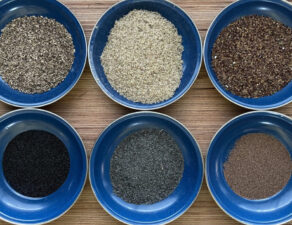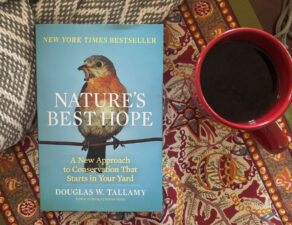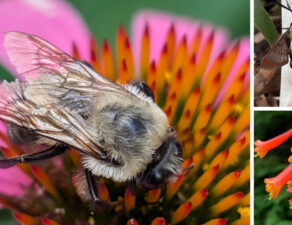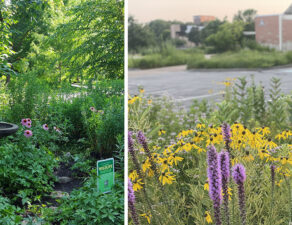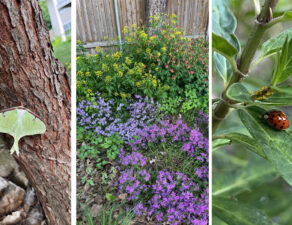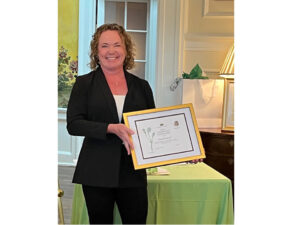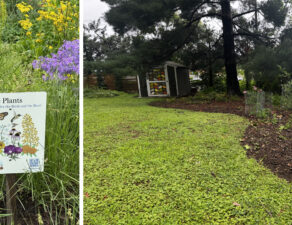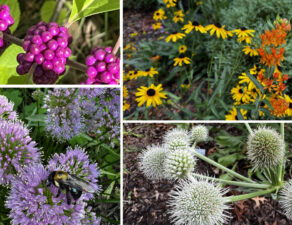
Winter is nipping at our heels as we dive deeper into our season of rest and planning. We love winter! Winter drives our bodies into a period of rest and reflection, allowing us to ponder what has been and what can be.
The cooler temperatures and dormant plants give us an opportunity to reset and consider what we should (and shouldn’t do) in the winter. Here are some general tips on what activities make the most impact during the winter:
- Water newly established plantings about once monthly if precipitation is low. Try to water ahead of deep freeze snaps. In dry, cold winters, the cycle of freezing and thawing can damage or kill newer plantings. Give them a drink when possible.
- Cut back (only slightly) tall native plants or grasses to adhere to height restrictions imposed by city codes or to please your own eye. Leaving plants is preferred.
- Grasses and sedges provide amazing winter interest when kept tall during the winter, showing off the beauty of even a light snowfall.
- Landscapes left throughout winter provide needed habitat and superior food sources to insects, birds, and many other types of wildlife during winter.
- Leave your leaves and plants whenever possible—raking can be a thing of the past!
- Leaves and dormant plants house untold numbers of beneficial insects and life. According to professor and best-selling author, Doug Tallamy, “most songbirds in North America are primarily insectivores….with seeds and berries only supplementing their diet.”
- Mulching your leaves can damage critical insects living in and on those beautiful leaves. If they can stay put, let them!
- Plan and dream of the work you can do in the spring planting season. Use the resources at your fingertips to start a native plant garden or improve on the one you already have. Here are some Deep Roots resources that can help:
- Plant—Yes, PLANT!
- Many native seed mixes contain seeds that need a period of cold stratification (cold and moist conditions). If you are planning or planting a small or large native plot or landscape using a native seed mix, getting these seeds in or on the ground in winter is ideal.
- Native seed mixes do not compete well with thick or pre-existing vegetation, so be sure the area to be planted is prepped well, removing weeds, woody stems and allowing for good seed-to-soil contact.
- Read—We love to learn, and let’s face it, many of us don’t have time to do it in the middle of the growing season. We have enjoyed and can recommend:
- Braiding Sweetgrass by Robin Wall Kimmerer
- The Nature of Oaks by Douglas Tallamy
- Nature’s Best Hope by Douglas Tallamy
- Native Plants of the Midwest by Alan Branhagen
- “Attracting Wildlife” from Missouri Department of Conservation
- Visit or hike a native prairie, local garden, or your own back yard or park and experience the sounds, smells and life teeming in nature. Here are only a few of our “go-to” spots in the KC metro:
And finally, rest, recharge, and enjoy the downtime offered us in winter. Spring will be here before we know it.
Photo credit: Cydney Ross, Buckbrush or Coralberry (Symphoricarpos orbiculatus)
Learn more about Coralberry
